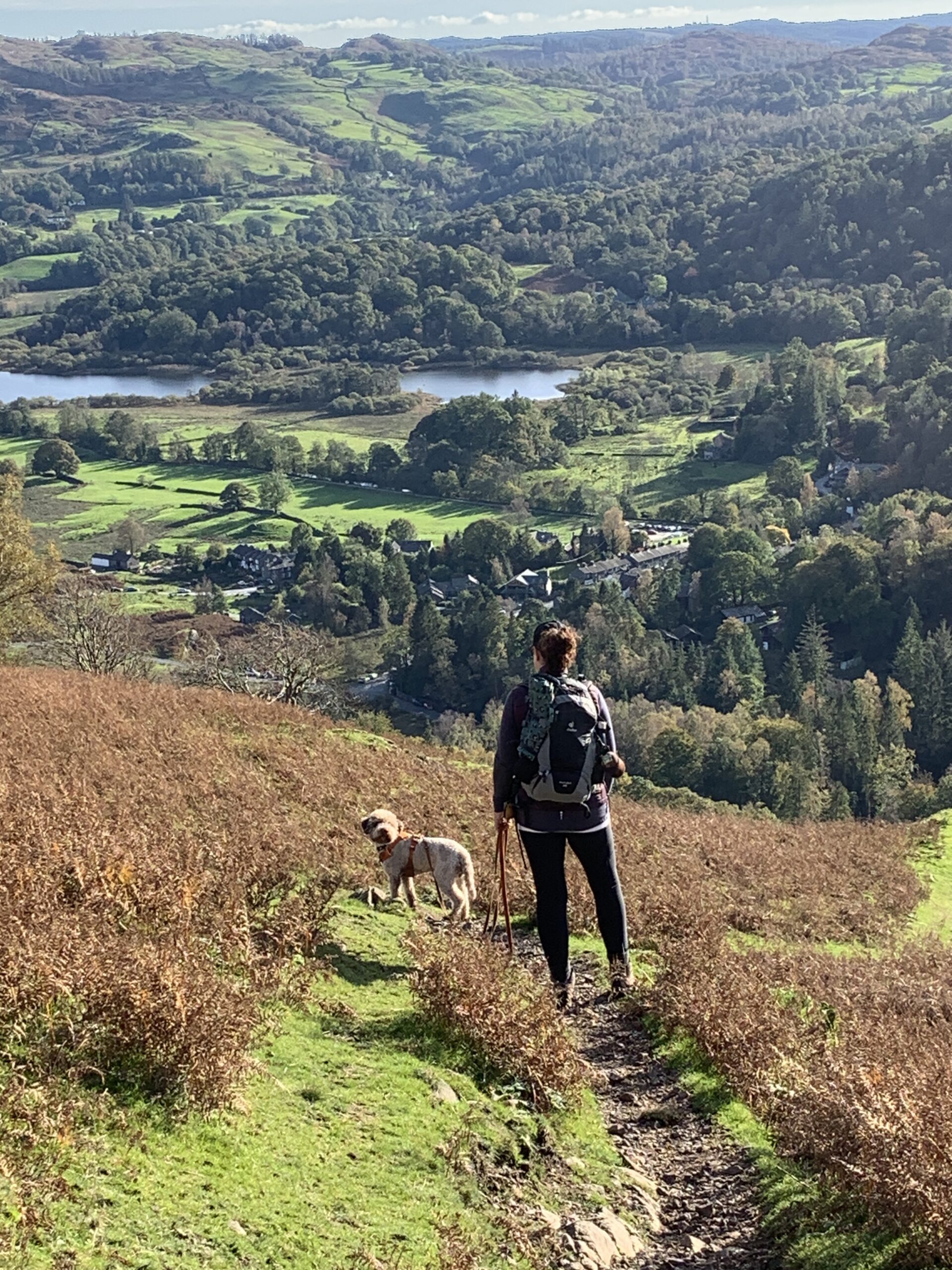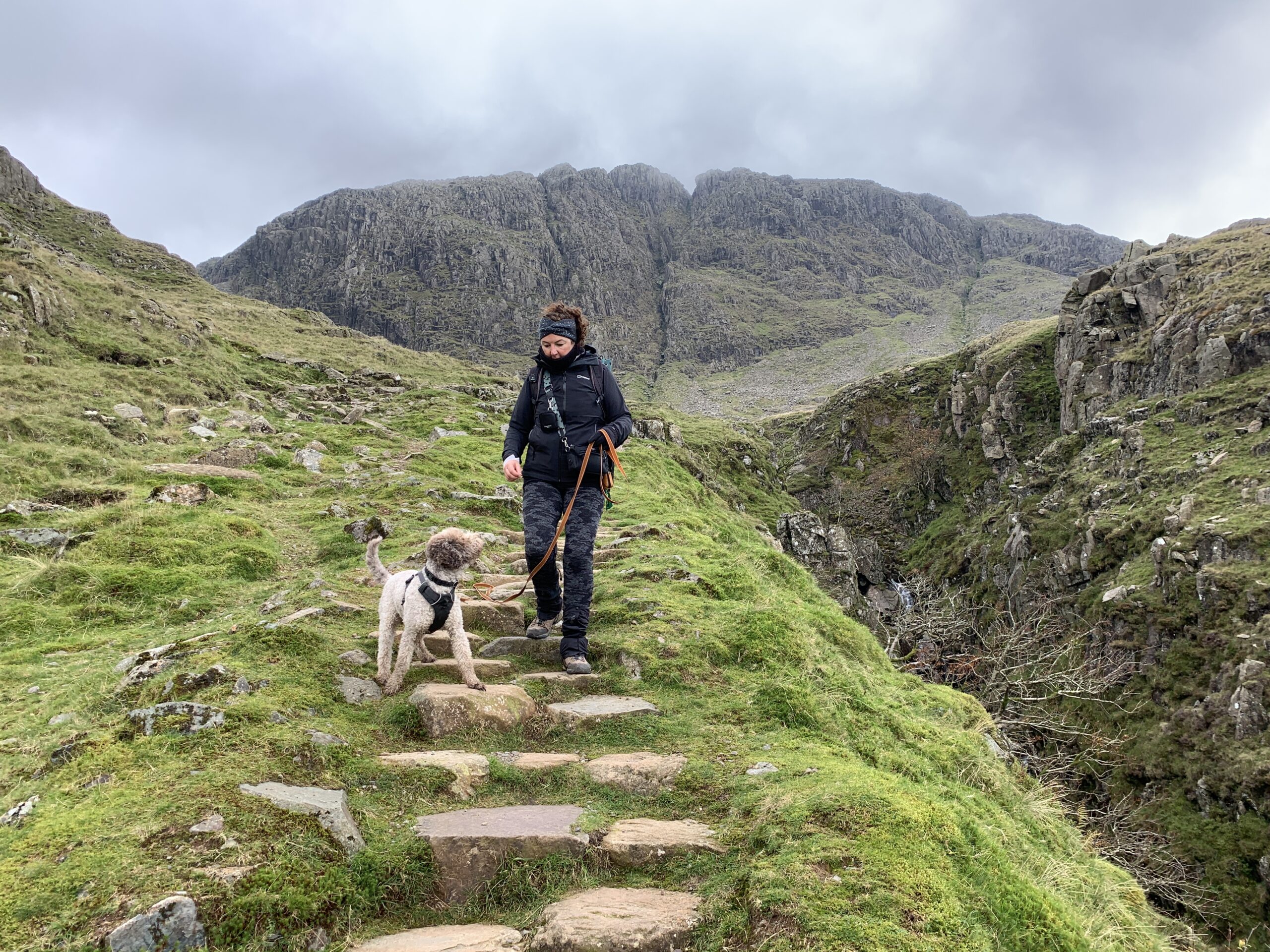Adventures With your Dog require some skills
Adventures with your Dog require some skills
Tips for Hiking with your Dog isn’t just about choosing a mighty fine location, because I’m sure you’ll agree this view is prettttty fiinnnnneee.


By skills, for Hiking, I’m talking about how your dog can walk calmly on lead with you.
On Lead Joy is probably one of the most difficult things to teach a dog. If you’re reading this because it’s not been easy, I feel you, I really do. I have a dog with a high energy that can be triggered by wildlife, other dogs and even the weather.
They don’t talk about this at puppy class, do they!!! I taught group classes for many years. It isn’t something owners are aware of with their young puppies. Puppy Parents only wanted the basics to get them where they felt they needed “How do you stop them biting” and wanted to master SIT, DOWN and STAY. Understanding a high-energy dog wasn’t relevant at the time for them. Plus, from experience, there’s only so much you can put in a curriculum in a 6-week course.
Luckily whenever I witnessed puppies finding the environment of a group setting a bit too much, I could spot and advise private coaching, which was always offered and puppies flourished by being taken out of situations they couldn’t cope with. I now only offer private coaching for puppy parents or older.
WHAT’S GOING ON?
When it comes to excessive pulling on the lead and you’ve been working hard but not seemingly improving things, there can be a manner of things going on, for this blog I’m going to focus on a healthy dog that just can’t seem to focus once they leave the house. (If you are seeing problematic behaviour in many area’s not just the house, it’s always best first to speak to your vet to make sure your dog is fit and healthy, this will always be the best starting place when working on loose lead walking, especially if we intend to go on lots of adventures together).
If you are completely at your wits end with trying to work on loose lead walking, I completely get you. Do you feel:
It’s perfectly natural to feel all of these things, it’s tough going, especially if you’ve been working hard to achieve something that resembles a lovely walk together.
Let’s also remember there will be a lot going on for your dog maybe. Pulling can be down to a few things, including:
- Your dog has learnt the behaviour to pull towards the scent/good stuff
- Your dog may be over excited to be out and about
- Your dogs genetics may be impacting their ability to walk at a slower pace
- You have a working dog going through adolescents
- You have a young working dog
- Your dog hasn’t learnt where you desire them to be
- Your dog hasn’t learnt to slow their gait down
- Your dog can’t connect with you
- Your dog may have a medical condition
This isn’t a full list but you get the gist, there’s ALOT to consider.
TIPS FOR HIKING WITH YOUR DOG
Where to start, I would say that connection is key, here are my TOP Tips how to understand where you start:
• Understanding that what YOU feel like your dog should do or where they should be is achievable
• Understand what may be preventing the desired ‘nice’ walk from happening, is it really just learning where to be?
• Understanding how your dog feels when they step out of the house, car, or into a field!
• Consider there could be more learning on how to connect with your dog out in the big wide world.
The more we know, the more we can support and guide our amazing dogs.
If you’d like to understand more and want to discuss your dog, why not book a FREE call to see how I can support you ready for Adventure With Your Dog.
OTHER THINGS TO CONSIDER
Now some people, they don’t have any preference when lead walking on where the dog needs to be. Some just want to walk together with the lead loose, that’s me, I like my arm in the socket, with Diggory calmly walking with me. While others prefer to have their dog right next to them or to never forge ahead of them.
There is no right or wrong. In this instance, it comes down to personal preference.
Some factors to consider are
• What is the purpose of the walk
• Where the walk will take place
• What is your dog’s size (tiny dogs don’t really need to be tucked at the side of you as it’s nice to see where they are as can be a trip hazard).
The key thing is, that it feels right for you and your dog.
If you’re enjoying your walks together, that is the main thing as long as you are both comfortable, not in any pain or at risk of injury to either of you then keep doing what feels nice to you.
If you feel like more could be improved, then try to take some steps towards what that may look like for you.